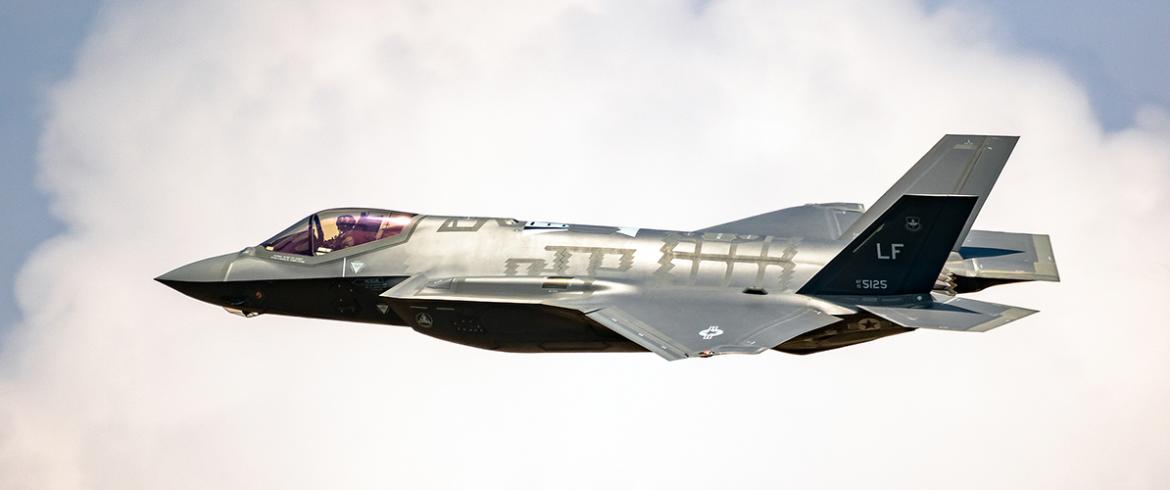
Bigstock Photo/VanderWolf Images
Walking out of the latest “Top Gun” movie, you might remember the iconic catchphrase, “I feel the need for speed.” Pete “Maverick” Mitchell, played by Tom Cruise, said those famous words in the 1986 movie, and they became the mantra of NAVY fighter pilots pushing their limits with the aerodynamics of flight. That’s the movies, but what about real life?
Rajan Kumar, the director of the Florida Center for Advanced Aero-Propulsion (FCAAP) and a professor in mechanical engineering at the FAMU-FSU College of Engineering, has some thoughts about that. FCAAP is a research institution devoted to the needs of the highly competitive aerospace industry.
“We experimentally simulate very similar conditions to those seen in “Top Gun.” However, the simulations in the movie are purely from an artistic point of view,” Kumar said. “What we do here is simulate real flight conditions in a high-speed wind tunnel.”

Kumar explains their group studies things that move very fast—like rockets, and projectiles—and the resulting hypersonic flow that you can’t see with the naked eye. The center partners with the FAMU-FSU College of Engineering as a training facility and develops new technologies and products related to the aerospace industry.
“We are supporting a number of national programs which involve high-speed flow,” Kumar said. “Everything from hypersonic, supersonic or transonic. We have a unique polysonic wind tunnel facility here that provides testing capabilities like nowhere else in the world.”
FCAAP works with the U.S. Department of Defense (DoD) agencies like the Navy, Air Force, Army, NASA, and several major corporations including Lockheed Martin, Northrup Grumman, Boeing. They also work with small companies such as M4 Engineering, Spectral Energies, and Aerosonic through Small Business Innovation Research and Small Business Technology Transfer government programs. FCAAP specializes in testing facilities specific to the aerospace industry.
“We are doing testing at speeds from Mach 0.2 to 5.0,” Kumar said. “We have a full-time staff of engineers and scientists who maintain the equipment and perform high-quality experiments.”
The group has a unique relationship with the Air Force Research Lab (AFRL) at Eglin and provides data that supports the development of various next-generation munition programs. They are also working with the Air Force base at Wright Patterson on a project that will help understand the aerodynamics needed to develop the next-generation fighter program.
“The relationship we have developed with our partners gives our students training opportunities that they can’t get anywhere else,” Kumar said. “Freeman Mason, one of my Ph.D. students, started working on the one of the Air Force projects associated with FCAAP and has a job waiting for him at AFRL at Eglin after he graduates this summer.”
“Another student, Andrew Baldwin finished his Ph.D. about a year ago and has a prestigious job opportunity with the Air Force to work at AEDC hypervelocity Tunnel 9, the only big hypersonic wind tunnel in the nation. Our students are in demand because of the training they are getting here,” Kumar explains.
One of the projects FCAAP is working on involves “safe payload separation” at supersonic speed. For example, if you are in a warzone and want to deliver a rescue package quickly to someone in need, you need to fly fast, so you don’t get shot down. It is challenging because you don’t want whatever you are dropping to hit the parent aircraft.
“The projects being carried out have strong relevance to DoD missions,” Kumar said.
“Another project we are working on involves mimicking the way birds fly. It involves ‘forebody articulation’ and allows for the nose of a projectile to maneuver and lock onto a target. Birds do the same thing when they target their prey. They rotate their body while their head stays still, locked onto their target,” Kumar said.
There are many more research projects going on at FCAAP. Several researchers at the facility are working collectively to target related research in mechanical engineering and aerospace engineering under the FCAAP umbrella.
Farrukh Alvi, interim dean of engineering and professor of mechanical engineering, is
working on flow from the aircraft exhaust on a carrier deck. He is looking at how the noise propagates and the effects on people standing close to that airplane. Another project he is working on involves the study of airflow at supersonic speeds and how the flow affects the aircraft structure.
Kourosh Shoele, assistant professor of mechanical engineering, is working with numerical simulations involving fluids and structures and how they interact with each other. He is also involved in bio-inspired engineering applications.
Unnikrishnan Sasidharan Nair, assistant professor of mechanical engineering, is looking at numerical simulations involving supersonic inlets. His research expands to other fields, like aero acoustics, noise propagation and hypersonic transition. He is involved in several DoD projects.
Neda Yaghoobian, assistant professor of mechanical engineering, is involved in several projects involved with environmental thermal fluids and heat transfer. She conducts multiphysics numerical simulations. She was the recent recipient of the NSF Career Award.
Brandon Krick, associate professor of mechanical engineering and William Oates, chair and professor of mechanical engineering, are working on smart structures and materials characterization. Their study is another branch of research at FCAAP.
